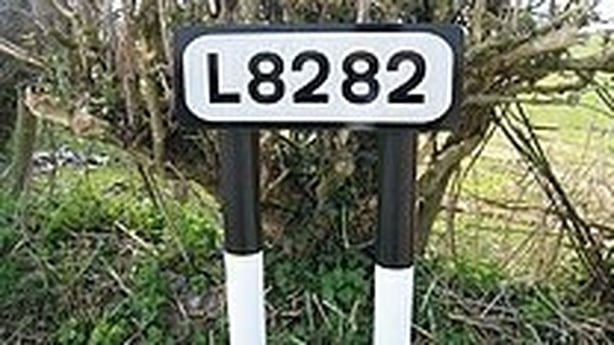From today the speed limit on many rural local roads has changed from 80km/h to 60km/h. It's being rolled out to get people to slow down and ultimately make our roads safer.
This change is part of the Government's Road Safety Strategy which is focused on reducing the number of deaths and serious injuries on our roads by 50% by 2030.
What roads are included?
There are three types of roads in Ireland - local, regional and national roads. The largest group are local roads which make up around 82,000 of the 100,000km of roads. These changes are happening on local rural roads, which are marked as 'L' on maps.
They mainly serve local traffic and provide access to homes, farms and small rural communities. From today, motorists will see new signs showing that the new speed limit for rural local roads is 60km/h instead of 80km/h.

These changes do not include local roads in urban areas. However, reductions to speed limits on these roads will come into effect later this year. The speed limit change does not affect 80km/h speed limits on Regional 'R' roads and National 'N' Roads.
How are local authorities involved?
Local authorities are responsible for updating the signs to reflect the new speed limits. They have received grants to change speed limit signs from 80km/h to 60km/h on relevant local roads, so road users can clearly see which limit applies.
It also changes the meaning of the 'Rural Speed Limit' sign. This sign is a black circle with diagonal black lines and is in use internationally. When it was first introduced on Irish roads in 2015, the sign meant that drivers must use their own judgement but must never exceed 80km/h.
From today this sign will mean drive at 60km/h or below. Most of the new signs have been put up across the country but due to recent weather events such as Storm Éowyn, not all new signs are in place in some areas. It's understood that in some of these areas it may take a few more days.
How will the new speed limits be enforced?
As with all speed limits, it will be an offence to exceed it. The Department of Transport said it has been working closely with gardaí and others to ensure that the 60km/h limit is implemented.
Chief Superintendent Jane Humphries of the Garda National Roads Policing Bureau said gardaí will be out across the country today to enforce the new lower speed limits. She also said they are asking drivers to have consideration and understand why the speed limit has been reduced.
"All that we are asking people to do is to take less than a minute longer for their journey to make the road safer for everyone," she said.
"This is not anything personal. This is for us all to do and to make the roads a lot safer than what they currently are."

Why are the changes happening?
These changes have come about because of reviews and research, including the impact of changes made to speed limits in other countries. International reports show that speed is a contributory factor in a third of fatal collisions.
In recent years across Europe, including in the UK and France, speed limits have been lowered. Subsequent research indicated that reducing speed limits contributed to a significant reduction in road fatalities.
Here, a working group of experts and relevant stakeholders was tasked with reviewing speed limits in 2023. By April 2024, the Road Traffic Act 2024 was signed into law and included provisions to amend the default speed limits on rural, local roads, urban roads and national secondary roads.
The Road Safety Authority said this decision that has been taken to reduce speed limits is a best practice approach to achieving "ambitious reductions" in road user fatalities and serious injuries. It also said lower speeds allow drivers more time to react to unexpected situations, thereby preventing collisions.
"The energy and force involved in crashes increase exponentially with speed. Even a small increase in speed magnifies the severity of injuries to the human body."
Are all local rural roads included?
National legislation sets default speed limits for different classes of roads. However, local authorities may then make changes to the default by setting ‘special speed limits’ for given roads in their areas.
Recent legislation establishes a safer baseline for speed limits on affected road classes but has not diminished the important devolved role for local authorities to vary speed limits under their jurisdiction, where this is appropriate.
The Department of Transport issued new guidelines to Local Authorities in early 2024 to assist them with this process.
What further changes are planned?
This is the first of three phases with more changes due to be implemented later this year. There will be a change to speed limits on local roads in urban areas with many roads reducing speed limits to 30km/h.
This will include built up areas as well as housing estates and town centres. The national secondary roads will also see changes happening with a recommendation that the speed is reduced from 100km/h to 80km/h.
For more information on speed limits, visit gov.ie/speedlimits
For more information on changes in their local area, people should check with their local authority.







